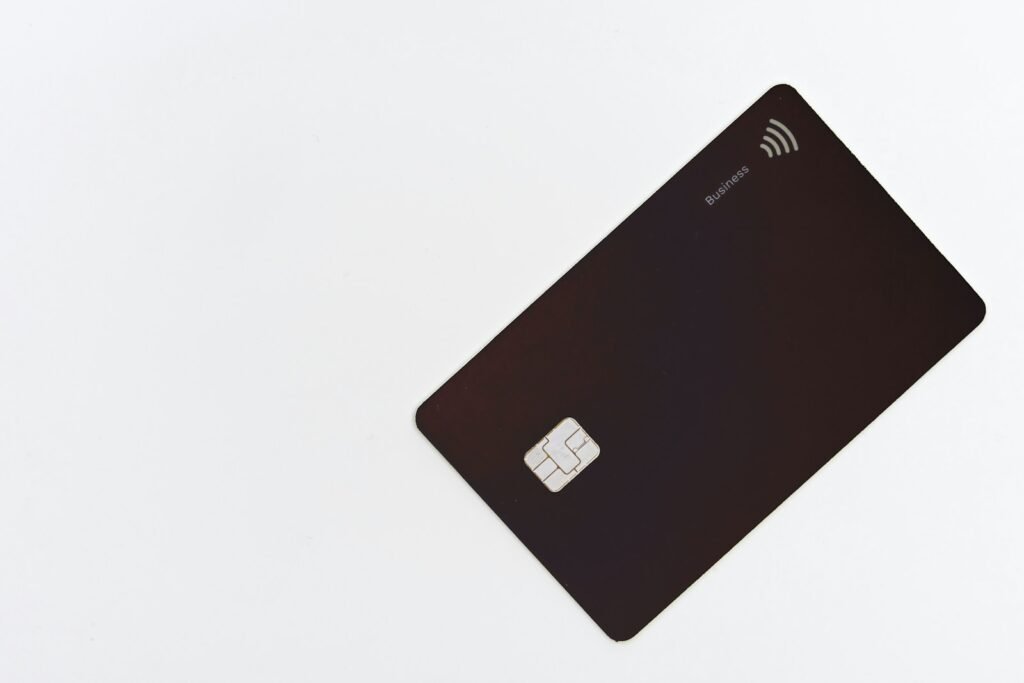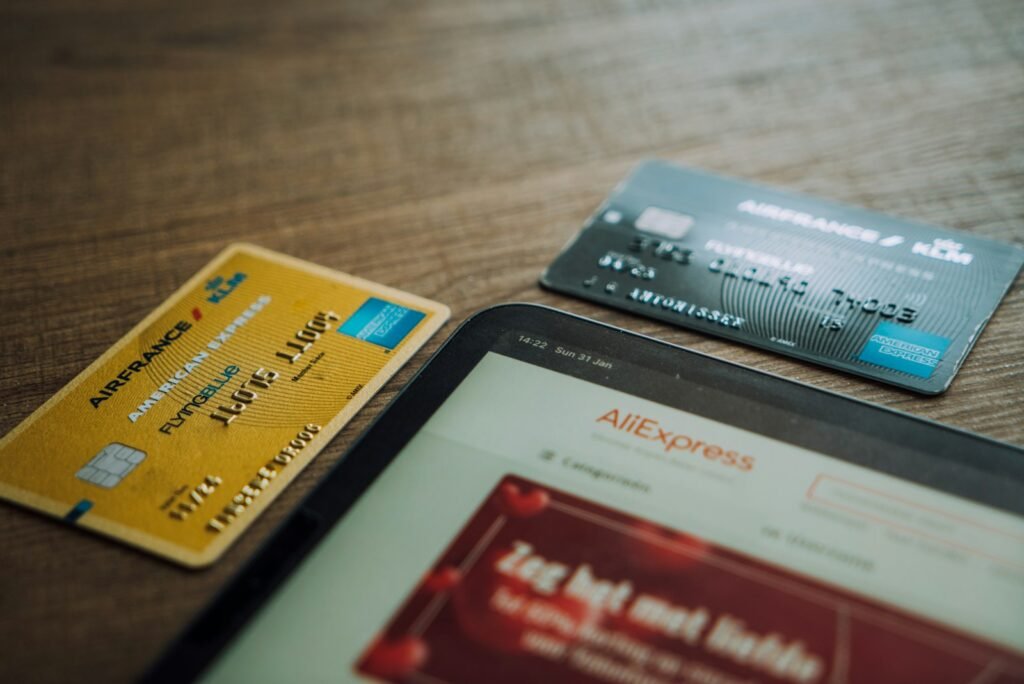Introduction
Credit cards have become an integral part of modern financial life, offering convenience, rewards, and a means to build credit history. However, the world of credit cards can be complex and confusing, with a myriad of options, terms, and potential pitfalls. Understanding how to navigate this landscape effectively is crucial for maintaining financial health and avoiding the trap of excessive debt.
According to a study by the Federal Reserve, American households carried over $1 trillion in credit card debt in 2022, a staggering amount that highlights the importance of responsible credit card usage. Mismanaged credit card debt can lead to a vicious cycle of high-interest payments, damaged credit scores, and financial distress, making it essential to approach credit cards with caution and informed decision-making.
Key Points to Cover
This comprehensive guide will explore the following key aspects of navigating the world of credit cards:
- Understanding Credit Card Fundamentals
- Choosing the Right Credit Card
- Building and Maintaining Good Credit
- Managing Credit Card Debt
- Maximizing Rewards and Benefits
- Protecting Yourself from Fraud and Scams

Understanding Credit Card Fundamentals
The Basics of Credit Cards
Before delving into the intricacies of credit card usage, it’s crucial to understand the fundamentals. Credit cards are essentially a form of revolving credit, allowing cardholders to borrow money from the issuing bank or financial institution. This borrowed amount, known as the outstanding balance, must be repaid over time, usually through monthly minimum payments.
Key terms to understand:
- Annual Percentage Rate (APR): The interest rate charged on outstanding balances, expressed as an annual rate.
- Grace Period: The time between the statement date and the due date, during which no interest is charged on new purchases if the previous balance was paid in full.
- Credit Limit: The maximum amount of credit a cardholder can borrow at any given time.
Credit Card Fees and Charges
Credit card issuers may charge various fees and penalties, which can significantly impact the overall cost of using a credit card. Common fees include:
- Annual Fee: A recurring fee charged for the privilege of holding and using the credit card.
- Late Payment Fee: A penalty fee imposed for making a payment after the due date.
- Over-the-Limit Fee: A fee charged for exceeding the credit limit.
- Balance Transfer Fee: A fee charged for transferring an outstanding balance from another credit card or loan.
Understanding these fees and charges is crucial for budgeting effectively and avoiding unnecessary expenses.
Choosing the Right Credit Card
Assessing Your Needs and Habits
Before applying for a credit card, it’s essential to assess your financial situation, spending habits, and goals. Consider factors such as:
- Your credit score and credit history
- Your average monthly spending patterns
- Your ability to pay off balances in full each month
- The types of rewards or benefits you value most
By evaluating your needs and habits, you can narrow down the options and find a credit card that aligns with your financial profile and lifestyle.
Comparing Card Options
The credit card market is saturated with numerous options, each offering unique features, rewards, and terms. Some key factors to consider when comparing credit cards include:
- Interest Rates: Look for cards with low introductory and ongoing APRs if you anticipate carrying a balance.
- Rewards Programs: Evaluate the earning potential and redemption options for rewards programs, such as cash back, travel points, or other perks.
- Annual Fees: Weigh the costs of annual fees against the benefits and potential rewards earned.
- Sign-up Bonuses: Compare sign-up bonuses and the spending requirements to earn them.
- Foreign Transaction Fees: Consider cards with no foreign transaction fees if you travel or make purchases abroad.
By carefully comparing card options, you can find the one that best suits your financial goals and lifestyle.
Building and Maintaining Good Credit
The Importance of Credit Scores
Your credit score is a three-digit number that reflects your creditworthiness and financial responsibility. A good credit score can open doors to better loan terms, lower interest rates, and more favorable credit card offers. Conversely, a poor credit score can make it challenging to obtain credit and result in higher borrowing costs.
According to Experian, credit scores generally range from 300 to 850, with scores above 700 considered good or excellent.
Factors Affecting Credit Scores
Several factors contribute to your credit score, including:
- Payment History: Paying bills on time is one of the most significant factors affecting your credit score.
- Credit Utilization: The amount of credit you’re using compared to your total available credit limits.
- Credit Age: The length of your credit history, including the age of your oldest and newest accounts.
- Credit Mix: The variety of credit types you have, such as credit cards, loans, and mortgages.
- New Credit Applications: Applying for too many new credit accounts can negatively impact your score.
Understanding these factors can help you make informed decisions and maintain a healthy credit profile.
Credit Card Best Practices
To build and maintain good credit, follow these best practices when using credit cards:
- Make Payments on Time: Set up automatic payments or reminders to avoid late payments, which can significantly damage your credit score.
- Keep Credit Utilization Low: Aim to keep your credit card balances below 30% of your total credit limit.
- Monitor Your Credit Reports: Regularly check your credit reports from the three major credit bureaus (Experian, Equifax, and TransUnion) for inaccuracies or signs of fraud.
- Apply for Credit Sparingly: Limit credit applications to only when necessary, as each hard inquiry can temporarily lower your score.
By following these best practices, you can maintain a strong credit profile and position yourself for better financial opportunities.

Managing Credit Card Debt
Understanding Debt and Interest Charges
Credit card debt can quickly spiral out of control if not managed properly. Interest charges, which accumulate on outstanding balances, can make it challenging to pay off debt and lead to a cycle of perpetual minimum payments.
To illustrate the impact of interest charges, consider the following example:
| Starting Balance | Interest Rate | Minimum Payment | Time to Pay Off | Total Interest Paid |
|---|---|---|---|---|
| $5,000 | 18% | $100 | 7 years, 3 months | $2,938 |
In this scenario, a $5,000 balance with an 18% APR and a minimum payment of $100 would take over 7 years to pay off and incur nearly $3,000 in interest charges.
Debt Repayment Strategies
To tackle credit card debt effectively, consider implementing these proven strategies:
- Debt Snowball Method: Pay off the smallest debt first, while making minimum payments on the others. Once the smallest debt is paid off, roll that payment amount to the next smallest debt, creating a “snowball” effect.
- Debt Avalanche Method: Focus on paying off the debt with the highest interest rate first, making minimum payments on the others. This approach minimizes the overall interest paid over time.
- Balance Transfer Cards: Transfer high-interest balances to a new card with a 0% introductory APR, allowing you to pay off the balance interest-free during the promotional period.
By employing these strategies, you can gain control over your debt and work towards becoming debt-free more efficiently.
Maximizing Rewards and Benefits
Understanding Rewards Programs
Many credit cards offer rewards programs that allow cardholders to earn points, cash back, or other perks based on their spending. These programs can provide significant value if used strategically.
Common types of rewards programs include:
- Cash Back: Earn a percentage of your purchases back in the form of cash or statement credits.
- Travel Rewards: Earn points or miles that can be redeemed for flights, hotel stays, and other travel-related expenses.
- Retail or Merchant-Specific Rewards: Earn points or discounts at specific retailers or service providers.
To maximize rewards, look for cards that align with your spending patterns and offer bonus categories that match your typical expenses.
Leveraging Card Benefits
In addition to rewards, many credit cards offer valuable benefits and perks, such as:
- Purchase Protection: Coverage for damaged, stolen, or lost items purchased with the card.
- Extended Warranties: Automatic extension of manufacturer’s warranties on eligible purchases.
- Travel Insurance: Coverage for trip cancellations, delays, lost luggage, and other travel-related incidents.
- Concierge Services: Access to personal assistants for booking travel, making reservations, and more.
Familiarize yourself with the benefits offered by your credit cards and take advantage of them to enhance your overall value and experience.
Protecting Yourself from Fraud and Scams
Recognizing and Preventing Credit Card Fraud
Credit card fraud is a growing concern, with cybercriminals employing sophisticated tactics to obtain and misuse card information. Common types of credit card fraud include:
- Skimming: Capturing card information using illegal devices attached to payment terminals or ATMs.
- Phishing: Attempts to obtain sensitive information through fraudulent emails, texts, or websites impersonating legitimate businesses.
- Card-Not-Present (CNP) Fraud: Unauthorized use of card information for online or over-the-phone transactions.
To protect yourself from fraud, follow these best practices:
- Monitor Statements Regularly: Review your credit card statements for unauthorized charges and report any suspicious activity immediately.
- Use Secure Payment Methods: Opt for secure payment methods, such as virtual card numbers or digital wallets, when making online purchases.
- Be Cautious with Personal Information: Never provide sensitive information, such as your full card number, CVV, or PIN, unless you initiated the transaction with a trusted source.
- Update Your Contact Information: Ensure your credit card issuer has your current contact information to receive fraud alerts and notifications.
Dealing with Fraud and Identity Theft
If you suspect you’ve been a victim of credit card fraud or identity theft, take immediate action:
- Contact Your Credit Card Issuer: Report the suspected fraud and request that the compromised card be canceled and a new one issued.
- Review Your Credit Reports: Obtain copies of your credit reports from the major credit bureaus and check for any unauthorized accounts or activities.
- File a Report: Report the incident to the appropriate authorities, such as the Federal Trade Commission (FTC) or your local law enforcement agency.
- Freeze Your Credit: Consider placing a credit freeze on your accounts to prevent further unauthorized access or account openings.
By staying vigilant and taking prompt action, you can minimize the potential damage and protect your financial well-being in the event of fraud or identity theft.

Additional Resources and Further Reading
For those seeking to deepen their understanding of credit cards and personal finance, here are some valuable resources:
- Books:
- “The Total Money Makeover” by Dave Ramsey
- “Your Money or Your Life” by Vicki Robin and Joe Dominguez
- “I Will Teach You to Be Rich” by Ramit Sethi
- Websites and Online Tools:
- NerdWallet’s Credit Card Tools
- Credit Karma’s Credit Monitoring and Simulation Tools
- The Federal Trade Commission’s Credit and Loans Resources
- Podcasts:
- “The Ramsey Show” by Dave Ramsey
- “Planet Money” from NPR
- “Money Girl’s Quick and Dirty Tips for a Richer Life”
- Personal Finance Communities:
- Reddit’s Personal Finance Subreddit
- Bogleheads Forum
These resources offer in-depth knowledge, practical advice, and ongoing support for navigating the complexities of credit cards and personal finance.
Practical Tips and Actionable Advice
To help you put the principles of effective credit card management into practice, here are some practical tips and actionable advice:
- Conduct a Credit Card Audit: Review all your current credit card accounts, including interest rates, fees, rewards programs, and outstanding balances. Identify cards that may need to be consolidated or canceled.
- Create a Debt Repayment Plan: If you have outstanding credit card debt, develop a realistic repayment plan using the debt snowball or avalanche method. Automate payments and track your progress regularly.
- Set Up Payment Reminders: Avoid late fees and potential damage to your credit score by setting up automatic payments or reminders for due dates.
- Optimize Your Rewards Strategy: Analyze your spending patterns and choose credit cards that offer the most valuable rewards based on your typical expenses. Consider using different cards for different categories to maximize rewards earnings.
- Take Advantage of Sign-Up Bonuses: If you have good credit, consider applying for new credit cards with lucrative sign-up bonuses, but be mindful of the spending requirements and potential impact on your credit score.
- Monitor Your Credit Reports: Regularly check your credit reports from the three major credit bureaus (Experian, Equifax, and TransUnion) for errors, unauthorized activities, or signs of identity theft.
- Practice Responsible Credit Card Usage: Treat credit cards as a convenient payment method, not a source of borrowing. Aim to pay your balances in full each month to avoid interest charges and maintain a healthy credit utilization ratio.
- Stay Informed and Educated: The credit card industry is constantly evolving, with new products, features, and regulations emerging regularly. Stay informed by following reputable personal finance resources and blogs to ensure you’re making the most informed decisions.
By implementing these practical tips and actionable strategies, you can navigate the world of credit cards with confidence, maximize the benefits, and maintain a strong financial foundation.
Conclusion
Navigating the world of credit cards is a journey that requires knowledge, discipline, and a proactive approach. By understanding credit card fundamentals, choosing the right cards, building and maintaining good credit, managing debt effectively, maximizing rewards and benefits, and protecting yourself from fraud and scams, you can leverage the power of credit cards to your advantage.
Remember, credit cards are powerful financial tools that can either enhance your financial well-being or lead you down a path of debt and financial distress. The key lies in using them responsibly, staying informed, and making informed decisions aligned with your long-term financial goals.
As you embark on this journey, embrace the opportunity to gain financial literacy, develop healthy credit habits, and cultivate a mindset of financial empowerment. With the right strategies and a commitment to continuous learning, you can unlock the full potential of credit cards and pave the way for a prosperous financial future.
So, are you ready to take control of your credit card usage and embark on a path towards financial freedom? Start today by implementing the insights and practical tips shared in this comprehensive guide, and enjoy the benefits of responsible credit card management.










